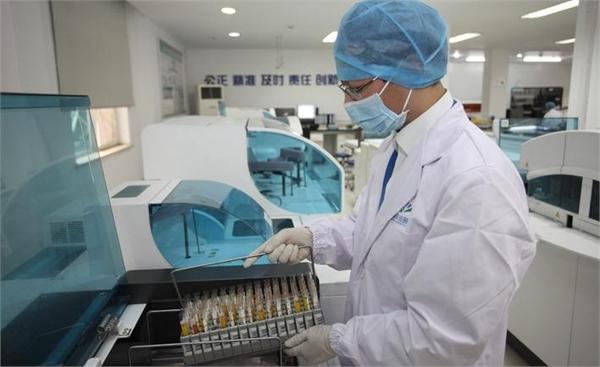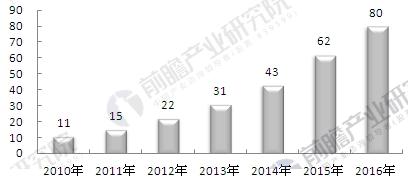The third-party medical diagnosis industry started in China at the end of the 20th century, and its development time is still relatively short. It is still in its infancy. Although the overall development of the industry has accelerated under the promotion of medical reform in recent years, it currently accounts for only 2% of the cost of medical examinations in the country. In the United States, this proportion has reached 35%. This shows that the development level of the third-party medical diagnostic industry in China is still Lower. On the one hand, the scale of the third-party medical diagnosis industry is still small. On the one hand, the social problem of “expensive medical treatment†is slow, while the cost of medical examination is generally reduced by 40%-60% compared with medical institutions. It is of great help to alleviate the problem of expensive medical treatment. 2015 is the first year of the development of independent medical laboratories in China, and the number has increased from 216 to 356. The industry prospects need to be further explored. According to the data from the Prospective Industry Research Institute's "Market Prospects and Investment Strategic Planning Analysis Report", the development of independent medical laboratories in China started late. In 2001, there were only 2 independent medical laboratories in China. In recent years, China's independent medical laboratories have developed rapidly. In 2015, the number reached 356, an increase of 140 compared with 2014, with a growth rate of 64.81%. As of the end of February 2017, there were 243 medical laboratories approved by CNAS (China National Accreditation Service for Conformity Assessment), an increase of 13.58% year-on-year. 2010-2016 China's third-party medical diagnostics industry market size (unit: 100 million yuan) Source: Prospective Industry Research Institute From the current point of view, molecular diagnosis is the development trend of medical diagnosis, and the growth momentum is strong. The data shows that the global sales of molecular diagnostics increased from US$360 million in 1995 to US$2.8 billion in 2007, and increased to US$6.6 billion in 2015, with a compound growth rate of around 10%. It is predicted that by 2018, the global molecular diagnostics market will reach 7.957 billion US dollars, and the in vitro diagnostic market will reach 79.3 billion US dollars. Molecular diagnostics require expensive equipment (such as high-throughput genetic sequencers ), a wide variety, and high requirements for personnel. Even large hospitals tend to outsource these projects for cost reasons, thus bringing third-party diagnostics. New growth point. Taking the famous Massachusetts General Hospital as an example, the number of molecular diagnostics sent out between 2002 and 2006 increased by 169%, accounting for 67% of the new types of imported projects during the same period; the compound annual growth rate of molecular diagnostics was 21.5%. It is much higher than the growth rate of 6.9% in the same period of other projects; driven by molecular diagnosis, the proportion of the amount of the delivery to the laboratory budget has increased from 12.4% in 2002 to 19.5% in 2006, and the types of delivery projects have also accounted for 2/3 of all test types. The proportion of molecular diagnostics sent to the Massachusetts General Hospital in the United States (unit: species, US dollars, times, %) Source: Prospective Industry Research Institute From the perspective of competition, it has been mentioned in the previous analysis that the third-party medical diagnostic industry has the characteristics of “first mover advantage and brand effectâ€. At present, the four major medical diagnostic companies in China account for more than 70% of the market share of the industry. Under the impetus of “first mover advantage and brand effectâ€, the future competition of the industry will present a competitive pattern of strong and strong. In addition, as the market for third-party medical diagnostics continues to expand, the number of new entrants will increase, and industry competition will further intensify. Prospective Industry Research Institute believes that although the domestic independent medical laboratory industry merger and reorganization is less, but with the continuous development of the industry, the scale of each enterprise continues to expand, the horizontal integration of mergers and acquisitions will continue to emerge; and when the industry develops to maturity Vertical integration of mergers and acquisitions will also emerge.
Acne Patch4
The main material of patch acne is hydrocolloid, which is composed of hydroxymethyl cellulose, medical hot melt adhesive. Korean acne patches is used to apply to the surface of acne, absorbing tissue secretions in a physical way and creating a moisture-balanced environment around the acne. Acne scar patch has a flat back and neat edges, with no defects of decoupling. Lanbena acne pimple patch can absorb more than twice of its own tissue fluid. Acne patch custom is disposable. Keep skin clean before product use, do not apply any products, do not use with ointment. Acne patch tea tree is most effectively absorbed when the acne appears pus-filled. To use hydrocolloid acne pimple patch cnc, remove the sticker, peel off the backing paper, apply it to the wound and gently press around it to fix it. The acne patch is most effectively absorbed when the acne appears pus-filled. To use this product, remove the sticker, peel off the backing paper, apply it to the wound and gently press around it to fix it. After the color of the acne sticker changes from clear to white, replace the sticker. Miracle acne patch has good water resistance and can be used during makeup or bathing.
Hydrocolloid application,acne pimple patch,lz pimple acne patch,acne patch salicylic Henan Maidingkang Medical Technology Co.,Ltd , https://www.mdkmedicales.com

